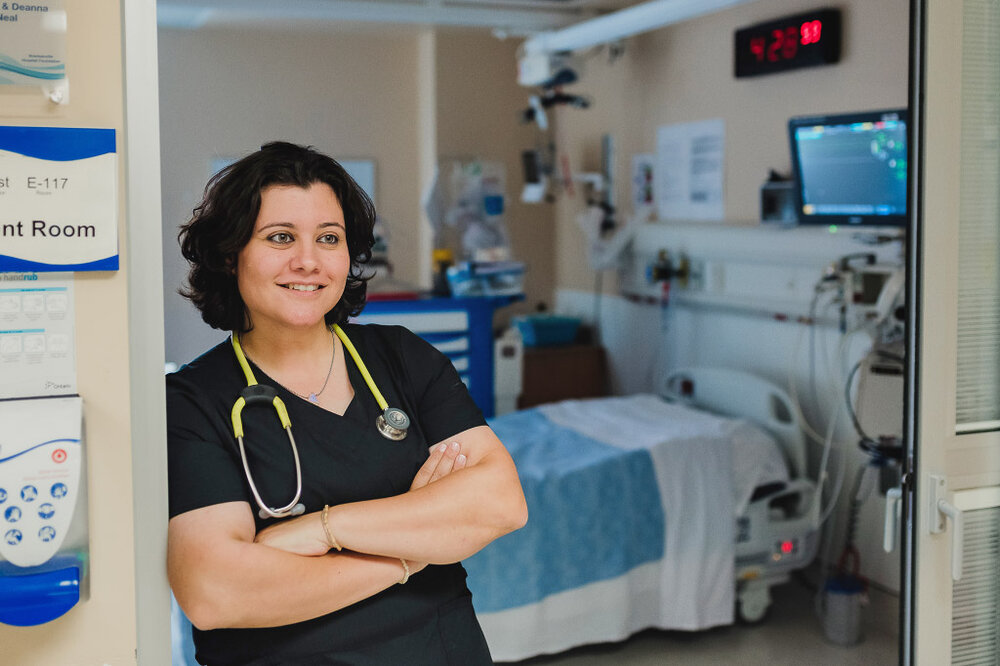Setting up a medical practice can be a daunting task, and trying to choose the best location for your medical practice can bring up more questions than answers. There are so many things to think about, like hiring employees, managing your ownership stake, and picking a perfect building. So how can you choose the best location for your medical practice? While there’s no right answer, here are nine things to consider to help you make your choice:
1. Convenience for your Patients
In a study by Advisory, six of the ten top factors patients ranked as important in choosing their doctor were related to access and convenience, even preferring convenience to a doctor’s credentials. Whether you have an existing medical practice and are looking for a new location or you’re starting from scratch, your primary concern as a doctor should be convenience. If you work in a specialization that serves a lot of seniors, then operating in an area with a lot of hospitals or retirement homes would be a good idea. If you’re a pediatrician, opening an office in a good school zone would be a wise decision.
Tools like PRIZM or Statistics Canada’s demographic data will help you check out the available demographics of your patient base and match it to the area you’re hoping to operate in; this will really help narrow down the best location for your medical practice. It will also give you more freedom to choose a great building, while making sure it is easy for patients to find you.
2. Neighborhood
Once you’ve chosen a convenient area of your city or town, the next thing to keep in mind is the neighborhood you hope to work from. Is it walkable? Is it friendly? Does it meet the needs of your target demographic? Choosing an open, friendly, neighbourhood that is accessible and safe is a key consideration in finding the best location for your medical practice. You may find you are priced out of certain neighborhoods with a good demographic, but you can just as easily find a similar mix of patients nearby, or in a cheaper area.
Also consider zoning plans and developments – are there any large public works slated for development in and around your practice? Will these developments make it more difficult for your customers to access your office, or change the amount of traffic they have to get through to locate you? Checking zoning records for your area or going to some local town halls will make it easier to sneak a peek at the plans for the area.
3. Staff
If you’re a single proprietor striking out on your own for the first time, the world is your oyster – but if you’re sharing your practice with other doctors, their needs have to be taken into consideration too. Are they able to move to your desired location? Are you both willing to commit to the same location for a long period of time? What are your options if one of the doctors in your practice chooses to move in? Since choosing the best location for your medical practice comes with a long term commitment (for both you and your clients), it’s in your best interest to ask these questions beforehand.
In an interview by Forbes, the Chief Medical Officer of medical research firm Press Ganey Associates stated that the main drivers for patient retention was “confidence in their provider; teamwork from the clinicians; and whether providers and staff showed concern for their worries.’ With customer service more important than ever, training and recruiting quality nurses, receptionists, and other employees to support your practice takes time. Will you be able to attract the talent you need in the area you choose to operate?
4. Parking & Traffic
Putting your medical practice somewhere with little parking, no access to transit, or barriers to accessible entry might make it so potential clients can’t access your services. Additionally, putting your medical practice in a suburb outside a major city or too close to a school zone might make it impossible for your patients to reach you at certain times of day. This leads to more late patients, longer hours and lost billable time for you.
Check out the facilities at the places you’re looking at operating your medical practice – is there accessible parking? Is this parking mostly for the other businesses in your area, or will you be able to direct your customers to a designated spot? Spotting potential difficulties beforehand will allow you to plan out any potential pitfalls ahead of time – not after you sign the lease.
5. Developments
As briefly mentioned, you need to consider any new developments on the horizon. It’s important to think about the types of businesses that are likely to come into the same complex or area as your medical practice. What was once a nice quiet retail space in a suburb might soon become a jungle if a popular bar or restaurant goes in next door.
Land developers or planners typically have some idea of how the space will be used before they develop it, so it’s worth checking in with the professionals before you get any surprise neighbors!
6. Amenities
There are many options for you to locate your medical practice, including offices in professional buildings, stand alone offices, retail spaces, or even remotely through telecommunications. Choosing the best location for your medical practice means you’ll need to take into account the needs of your practice and the expectations of your patients. Patients looking for a family doctor are more likely to be happy with space in a professional building than clients looking for an upscale dermatologist or dentist. Retail spaces or standalone offices might allow you to bring a more polished customer care experience, while spaces in professional building or shared offices will help you keep your costs low.
Consider also the kinds of demographics you are expecting for your patient base – if you typically serve senior patients, it may be in your best interest to skip the four story walk up. On the other hand, if you’re looking to please a younger clientele, maybe the tr
endy new restaurant next door isn’t such a bad thing!
7. Costs
Aside from compatibility with your demographic, costs are the most important factor associated with operating your own medical practice. According to a study by Innocare, the costs of opening your own medical practice range between $70,000 and $100,000. These costs will vary considerably with the type of office space you choose.
A strong practice will have a solid plan in place to lower your expenses while also maximizing the needs of doctors and the care of the patients. If you’re just starting out, work from shared office spaces and choose a more conservative price point that works for you. Conversely, if you’re looking to grow an existing practice, operating from a larger, brighter, or more visible space might be a better fit.
It’s important to also consider the number of practitioners working there, the number of staff you need to hire, and the costs of overhead and utilities in the area. Different neighborhoods will have different patient expectations for service, and different rates for staff and utilities. Choosing the best location for your medical practice means shopping around as little differences here and there really start to add up.
Taking a look at the rates for these services in the areas you’re considering will make it a lot easier to decide where to set up shop. Try one of these utility cost calculators to ballpark your outflow.
8. Competition
According to a study by The Fraser Institute, the single most important factor in determining patient demand is the number of available doctors in the area. Be careful to consider the number of competing businesses near your medical practice. Too many doctors will crowd the market, but too few might mean there aren’t enough patients to support your specialization. Finding a good balance between the two means careful research into your area of practice. Check out local directories or business listings, and see if you can find other medical professionals who work in the area – they might have great insight into any problems you might face.
9. Work Life Balance
Finally, where do you want to live? Opening your own medical practice is a long term commitment, and one that should take into consideration the needs of you, your staff, and your families. A study by The Physicians Foundation showed that 78% of physicians experienced burnout – don’t let the location of your medical practice make you one of them!
The best location for your medical practice needs be balanced. A productive location that is an hour long commute from home might be unsustainable in the long term, and a busy downtown spot might bring in the clients but leave you going home exhausted. One of the highlights of opening your own medical practice is the ability to set your own flexible work hours and design your own office space – you might as well make it a great one!
This article offers general information only and is not intended as legal, financial or other professional advice. A professional advisor should be consulted regarding your specific situation. While information presented is believed to be factual and current, its accuracy is not guaranteed and it should not be regarded as a complete analysis of the subjects discussed. All expressions of opinion reflect the judgment of the author(s) as of the date of publication and are subject to change. No endorsement of any third parties or their advice, opinions, information, products or services is expressly given or implied by RBC Ventures Inc. or its affiliates.

Additional Reading
Dr. Nour Khatib left medical school for a finance career, but a persistent calling encouraged her to return years later and become an emergency physician.







